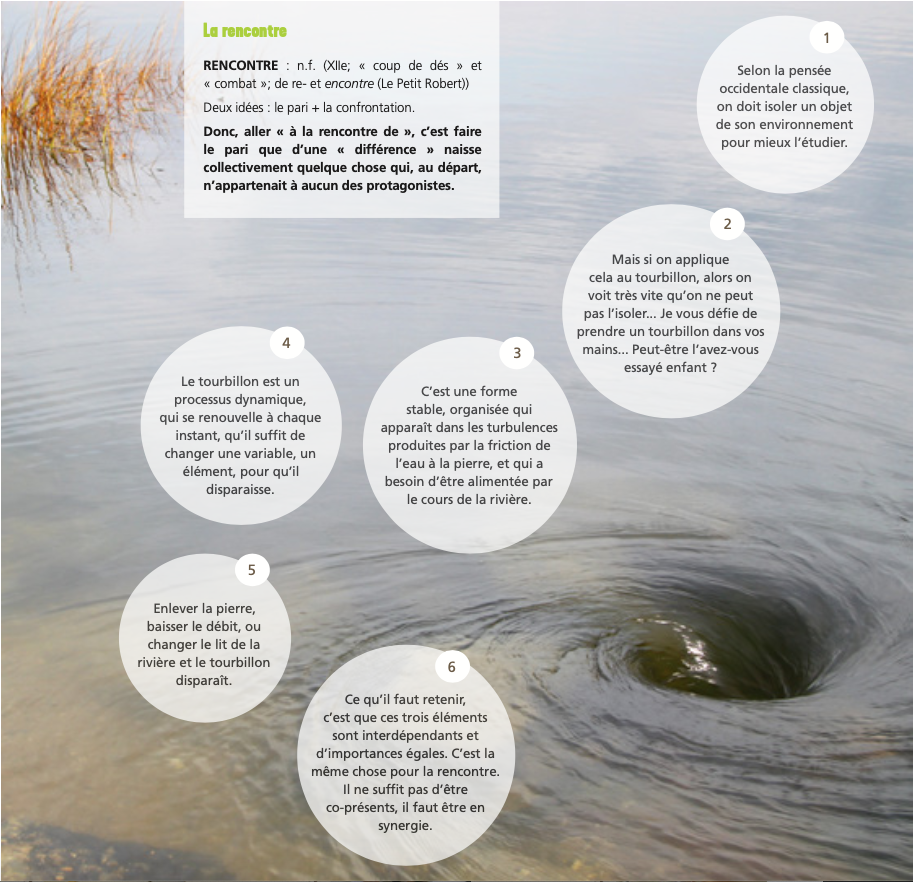Designing Project Leadership
Collective and concerted action favors shared leadership, meaning influence and decision-making processes are shared towards common goals. However, depending on the project's nature, rotational leadership is also possible. This type of leadership suggests considering each person's strengths, skills, and expertise, and consensually delegating influence and decision-making processes to one or more project stakeholders.
Here's an exercise to facilitate your reflection and dialogue. This step clarifies partner responsibilities and identifies the most suitable leadership style for project success.
First Steps
This tool will support your reflection. It refers to the collaboration levels table.
1. The exercise can be conducted among the project's main partners. If partnerships are already agreed upon, representatives can be invited.
2. Together, considering the project's specifics, agree on its major milestones and name them. You can then list them at the bottom of the chart.
3. Referencing the Collaboration Levels table, discuss the project's phases and the level of participation each stakeholder should have at different stages.
3.1 Initially, each individual does the exercise independently.
3.2 Then, each presents their personal vision and understanding of stakeholders' collaboration levels. Differences in perception are noted and discussed.
3.3 Together, strive for consensus. Use different colored pencils to trace collaboration level curves (one color for each stakeholder).
4. Use the chart to consensually confirm the degree of participation of different stakeholders.
Dans un second temps
Afin de s’assurer d’un partage clair du leadership et du niveau d’engagement de chacun(e), l’exercice suivant peut être réalisé.
Inspirée de l’outil de gestion RACI, cette matrice que nous te proposons est adaptée à la mise en place de projet collaboratif.
Tu peux retourner voir l’échelle de collaboration pour la planification du projet à cette page dans les étapes précédentes comme référence.
Levels of Engagement
D = Decision Maker (N7)
Real power over decision-making and project implementation. If two or more people hold this level of engagement, collective leadership is at play.
CA = Concerted Action (N6) (in action)
Real power to participate in decisions in consultation with project stakeholders. Everyone has real power over project implementation.
N = Negotiated (N5)
Power is relative. Involved parties engage in dialogue to reach consensus or find the best possible solution suited to the project's context.
CONS = Consulted (N3-4)
Power is relative. The consulted stakeholder has the power to express opinions and influence the final decision.
O = Observer (N1-2)
No power. The stakeholder is informed about the project's progress but has no decision-making power.
A = Absent (N0)
No power. The stakeholder is uninformed about the project's stage and has no decision-making power.
Here's a proposed template and an example of leadership sharing possibilities throughout the project. It's recommended to adapt it to the project's nature by adding stages and sub-stages in the left column.
Partner 1 | Partner 2 (Indigenous) | Partner 2 (Indigenous) | Project Team | Advisory Committee | Community | |
Project Start-Up | ||||||
Project Design | D | D | A | C | A | C |
Schedule, Timeline, and Budget | D | D | N | C | A | A |
Organizational Chart and Project Team Setup | D | D | A | C | C | C |
Project Management | D | D | A | AC | O | A |
Phase 1: Exhibition Design | AC | AC | A | AC | C | AC |
Phase 2: Collection and Research | O | AC | A | C | C | AC |
Phase 3: Exhibition Scripting | AC | AC | A | AC | C | O or N |
Phase 4: Production and Implementation | D | D | A | CONC | C | CONC |
Phase 5: Exhibition Display and Project Closure | AC | AC | O | AC | C | AC |
Here's an article to take you further: Governance in aboriginal research.
"To achieve it, you must first unlearn what you know and then listen to me."
- Reference: Kaine, É., & Lavoie, D. (2022). Indigenous Research Governance. Revue D’études Autochtones, 52(3), 105.











